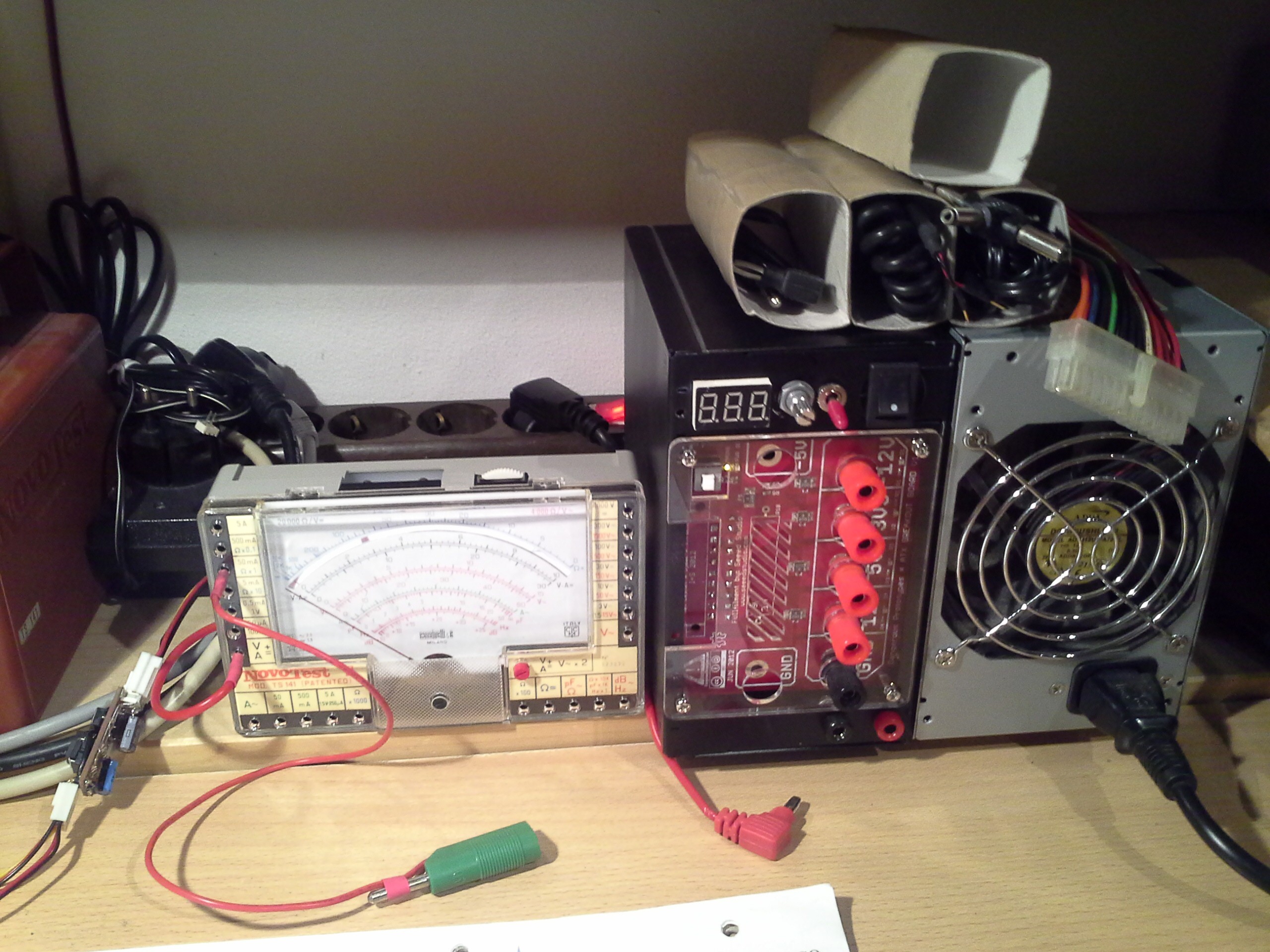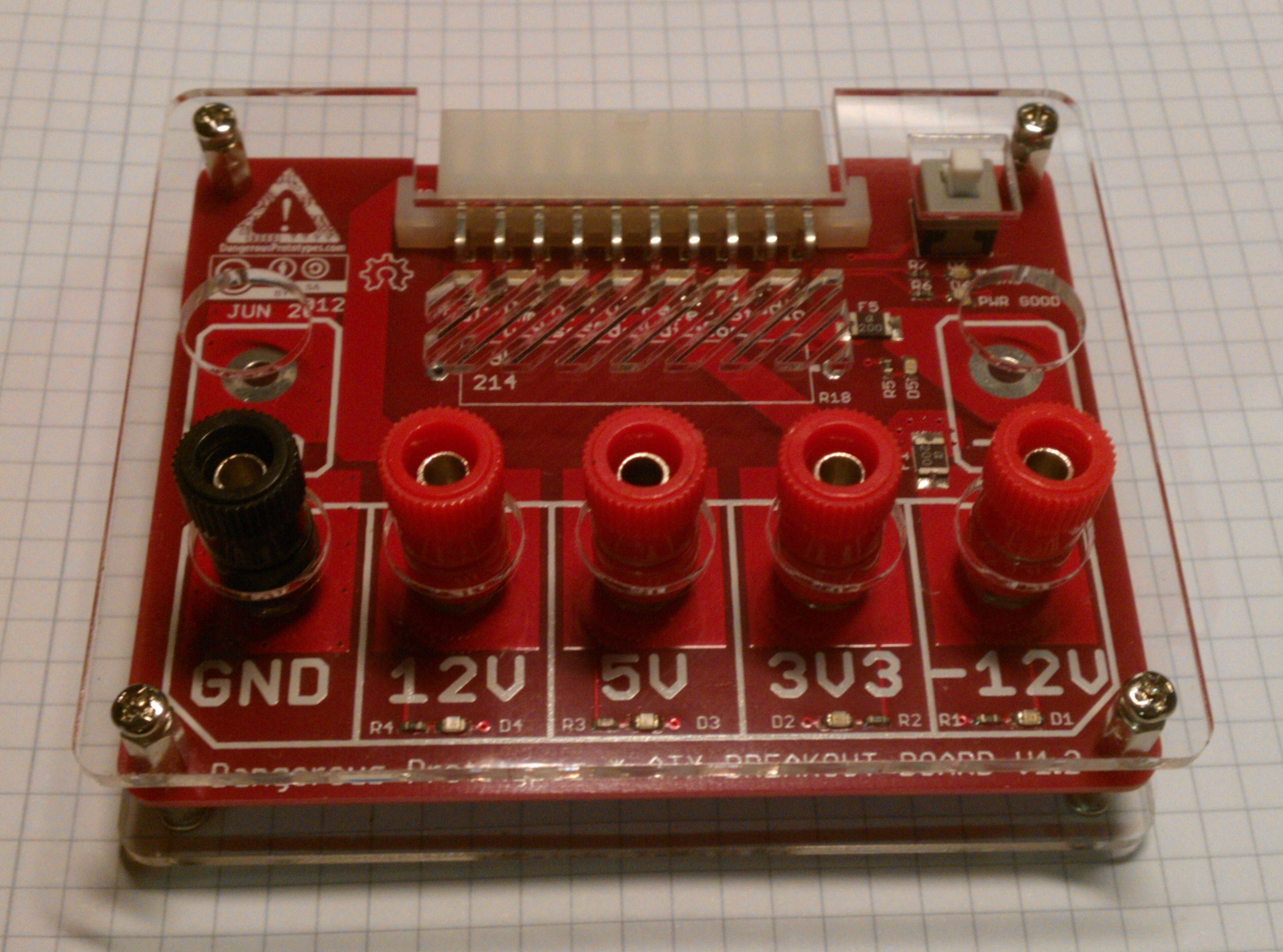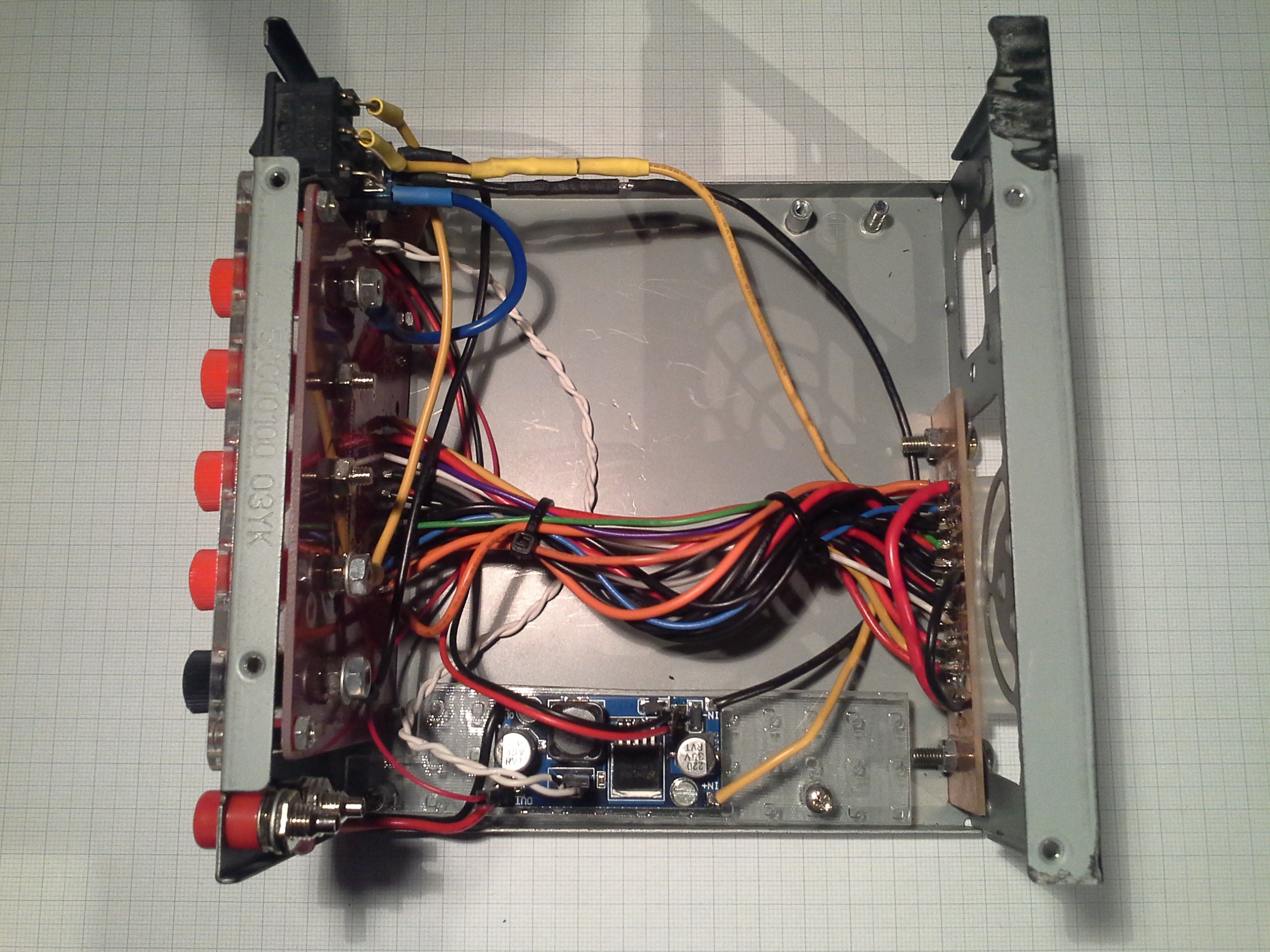Before starting the project I did some research and found many great instructions so I'll not go into detail about the topic but rather share some pictures and comments.

After using an Arduino or even a programmer to power my projects on a breadboard there came the time to move on. I liked the idea of using an old ATX power supply mainly because it was a cheap solution and I don't have the need for something more sophisticated as of now. I didn't really want to do a proper conversion, in the sense of adding binding posts to a PSU, due to the fact that if the power supply failed the work would have been for nothing. Therefore I took the easy way and bought an ATX breakout board so in case of a failure simply swapping the PSU would solve the problem. Specifically, I used the Dangerous Prototypes ATX Breakout Board. (There's also one from Sparkfun)

Using this board has the advantage that it's basically a complete ATX power supply kit and I didn't have to worry about choosing proper power resistors since I trust DP when they say they aren't needed in most cases. The fuses are a nice feature, too, and if I need more than 1A of current I can still tap into the Molex connectors. The only downside was that the 20/24 wire mainboard connection is quite rigid which hardly lets the breakout board rest level on a table. Therefore, by mounting it in a case I could have it stay in the same place and also add some features. Well... one feature. By adding a LM2596 switching voltage regulator board and a voltmeter the PSU can also supply a variable voltage. With a slight modification to the cheap voltmeter it's even possible to measure voltages down to 1.2V but more on that in a separate log.

As you can see in the pictures, hooking everything up is pretty straight forward: The PSU attaches to the (modified) breakout board and the voltage regulator to the breakout. For the breakout board to be used in a case (an old ATX PSU case) I needed to move the 24 pin connector to the back of the case (or at least to the back of the board, which will be possible with the next version of the DP breakout board). Due to the lack of a CNC router and motivation to order a PCB I threw together this circuit board made from copper clad board machined with a rotary tool.

Obviously the outputs of the voltage regulator go to two banana sockets but for the inputs I chose to connect the positive input to the 12V rail via a switch to turn it off and on. The negative input however, can either be connected to GND or -12V to get a larger voltage range although with lower amperage. In order to control the voltage from the panel it was necessary to remove the onboard potentiometer and replace it with one that can be mounted to the case. To do this I added pins for the pot and also for the in- and output voltages with the latter ones being for the voltmeter.

Conclusions
Initially I was hesitant to completely build this ATX conversion myself since there are some variations among all instructions, mainly regarding minimum loads, but when looking at the schematics of this breakout board it's actually straight forward. Therefore, in v2 I'll probably design a PCB similar to DP's v2 with the binding posts and 24 pin socket being on opposite sides.
The LM2596 module works great. However, recently I've found myself in need of current control which is why I'll use a different module of this type next time. This will of course also require an amperemeter, which is why a combined voltage and current meter will probably be the better choice.
The potentiometer I used here only allows for about 300° of rotation. This makes precise setting of a voltage between 0V and 12/24V quite difficult (but not impossible). A better option would be a pot with 10 turns of travel like this one.
As you saw, there's a lot of space left in the case so a smaller case should do in the future. I'm thinking about building something that would attach to the ATX PSU like this.
 Stefan Lochbrunner
Stefan Lochbrunner
Discussions
Become a Hackaday.io Member
Create an account to leave a comment. Already have an account? Log In.